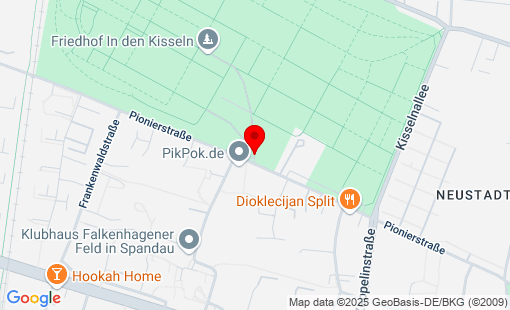Germany
Berlin-Spandau, Friedhof "In den Kisseln"
Total Occupation: 8.212 fatalities
Total Occupation: 8.212 fatalities
The largest cemetery within the city limits of Berlin with an area of almost 62 hectares was laid out in an existing stand of pine trees ("Kisseln") and established as a successor to the cemeteries in the Oranienburger Vorstadt. The cemetery was opened on 17.11.1886. The graves of the victims of war and tyranny have been arranged in 16 different closed sections, almost all of which are next to each other. As early as the 1940s, some areas were laid out here for those who died as a result of war, exclusively for civilians and soldiers of the Second World War. Among the civilians are the victims who died in the air raids of 22.11.1943 and 30.1.1944. As the inner-city cemeteries in particular did not have enough space to accommodate the numerous dead, the cemeteries on the outskirts of the city were used. The multiple occupancy of individual graves is particularly noticeable in the burial grounds. Two or more nameless, unknown victims were often buried together with known victims in one grave. An orderly burial of these numerous bomb victims, who were often disfigured beyond recognition, and of the war victims who were increasingly mourned in the last days of fighting in April/May 1945, was obviously no longer possible. The cemetery itself became part of the fighting in the Battle of Berlin. In one section there is a concentration of graves of victims from foreign nations, in another section there are more graves of Russian forced laborers and in a further section numerous German refugees found their final resting place. 117 soldiers who were shot by summary execution between 21.8.1944 and 13.2.1945 were also buried in this cemetery; they had been accused of "subversion of the armed forces" by the Nazi regime. Three cemeteries with a total of almost 1,000 graves were laid out in 1919 for the fallen of the First World War. Those who died in the November Revolution of 1918 and the Kapp Putsch were also buried here. The French Cross commemorates 400 French prisoners of war from the Franco-Prussian War of 1870/71 who died of black measles.
